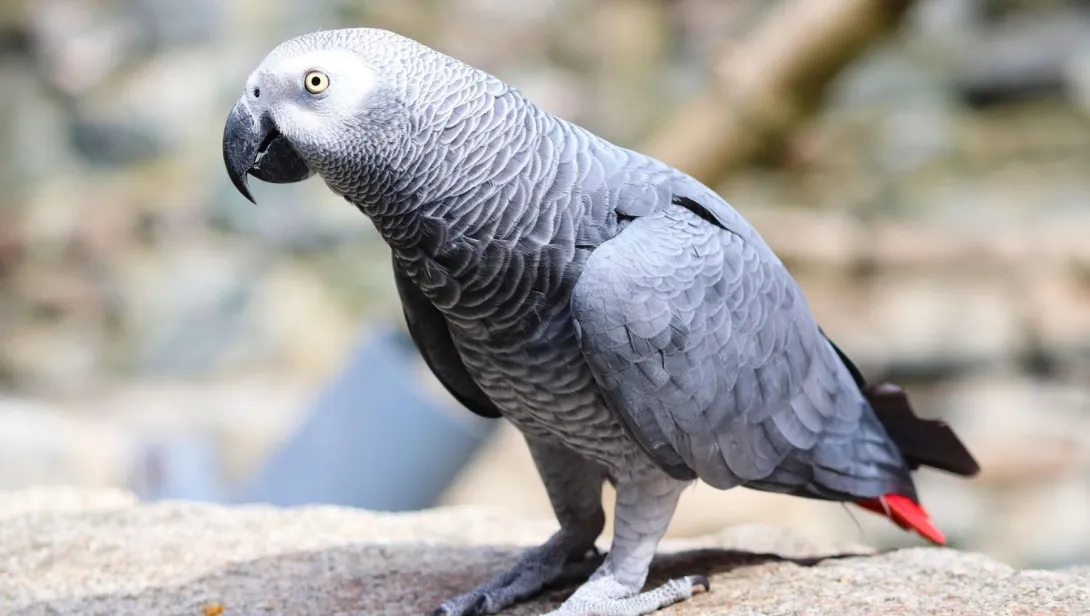Skip to main content
Introduction
- The African Grey Parrot (Psittacus erithacus) is renowned as one of the most intelligent bird species in the world.
- They are native to the rainforests of West and Central Africa, including countries like Congo, Ghana, and Cameroon.
- African Greys are divided into two subspecies: the Congo African Grey (larger, light gray) and the Timneh African Grey (smaller, darker).
Physical Characteristics
- African Greys measure 12 to 14 inches (30 to 36 cm) in length and weigh 400 to 650 grams.
- They have striking gray feathers, a white mask around the eyes, and a bright red tail (Congo subspecies).
- Their black beak is powerful enough to crack hard nuts, and their feet are zygodactyl (two toes forward, two backward).
- They have a lifespan of 40 to 60 years in captivity, with some living up to 80 years.
Intelligence and Communication
- African Greys are considered the smartest parrot species, with cognitive abilities comparable to a 5-year-old human child.
- They can learn over 1,000 words and understand context, humor, and emotional tone.
- Famous African Grey Alex (studied by Dr. Irene Pepperberg) demonstrated understanding of concepts like color, shape, and numbers.
- They mimic sounds perfectly, including human speech, phone rings, and other animals.
Habitat and Behavior
- In the wild, they inhabit dense rainforests, mangroves, and savanna edges, usually near water sources.
- African Greys are highly social, living in flocks of up to 1,000 birds but forming monogamous pairs for life.
- They are diurnal, active during the day, and roost communally at night.
- Wild African Greys take daily dust baths to maintain feather health.
Diet and Feeding
- Their diet consists of fruits, nuts, seeds, berries, and bark, with a preference for oil palm nuts.
- They use their dexterous feet to hold food while eating, like primates.
- In captivity, they require calcium-rich foods (like leafy greens) to prevent deficiencies.
- African Greys are known to self-medicate by eating clay to detoxify poisonous seeds.
Reproduction
- They nest in tree cavities, with breeding season tied to rainy periods (varies by region).
- Females lay 3 to 5 eggs, incubating them for 28 to 30 days while males provide food.
- Chicks fledge at 12 to 14 weeks but stay with parents for up to 2 years to learn survival skills.
- Sexes look identical; DNA or surgical sexing is required for determination.
Conservation Status
- Listed as Endangered on the IUCN Red List due to habitat loss and illegal pet trade.
- Over 1 million African Greys were captured for the pet trade from 1982 to 2014.
- CITES Appendix I now bans commercial international trade of wild-caught individuals.
As Pets
- They are demanding pets requiring 4+ hours of daily interaction and mental stimulation.
- Without enrichment, they develop behavioral issues like feather plucking or screaming.
- Their intelligence allows them to solve puzzles, use tools, and even lie to get rewards.
- African Greys form strong bonds with owners and may suffer depression if neglected.
Unique Abilities
- They understand object permanence (knowing hidden items still exist).
- Can associate words with meanings, like "want" + "banana" to request food.
- Some African Greys count objects and grasp concepts like "bigger" or "different."
- They mimic voices so accurately that owners can't distinguish their parrot from a human caller.
Threats
- Deforestation destroys nesting sites and food sources.
- Poaching for the pet trade remains rampant despite bans.
- Climate change alters fruiting cycles of trees they depend on.
Fun Facts
- African Greys have a "play face" (pupils dilate, feathers fluff) when excited.
- They blush (skin turns pink) when emotionally stimulated.
- In the wild, they raid crops, earning them the nickname "feathered primates."
- Their brain-to-body ratio is comparable to great apes and dolphins.
- Some African Greys outperform MIT students in memory tests.
